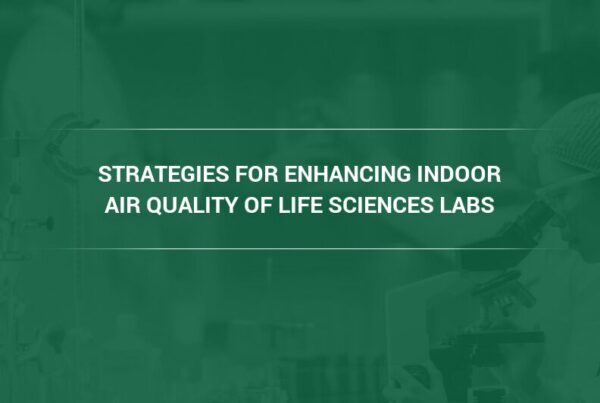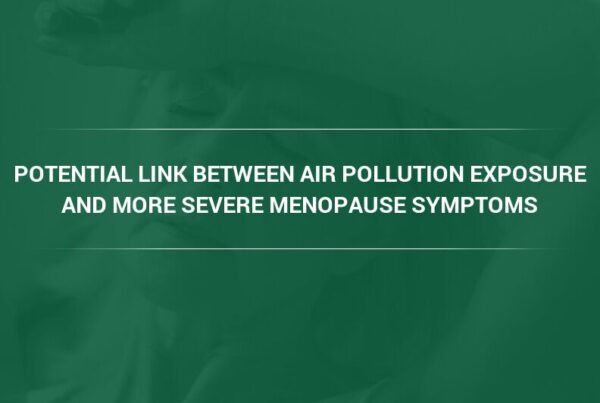With the start of the 2023-2024 school year quickly approaching, it is important for schools to consider their air quality. The indoor air quality (IAQ) in schools has impact on student and staff health, academic performance, and more.
In this article, air quality experts from Camfil explain the importance of clean air in schools and how school districts across the country can achieve better air quality.
What Are the Main Sources of Air Pollution in Schools?
There are two main categories of air pollution sources that affect air quality in schools: ambient (or outdoor) pollution that has made its way inside the building, and indoor pollution emitted from activities and materials that occur inside.
Sources of outdoor air pollution in schools depend on local geographical factors, such as population density, proximity to industrial buildings and farms, vehicle traffic volume, climate and weather patterns, soil composition, and trees and other flora.
The Environmental Protection Agency (EPA) lists a number of potential indoor sources of air pollution in schools. Sources of particulate matter can include chalk dust, sawdust, debris from food preparation, by-products of combustion, excessive humidity, and occupants with communicable illnesses.
Many everyday materials and pieces of equipment produce volatile organic compounds (VOCs), many of which have harmful short- and long-term effects on their own, while others react with other chemicals in the air to form yet more dangerous pollutants. Sources of VOCs in schools can include:
- Cleaning supplies
- Printing and copying machines
- Pesticides
- Personal care products such as hairspray
- Art and shop class supplies, such as paint, varnish, wax, and glue
- Science/laboratory supplies and procedures
- Cheap furniture and flooring
- Dry-erase markers
While school facilities management teams can strive to choose materials and equipment that produce less pollution, it is clear from these lists that it is impossible to completely eliminate all pollution sources from schools, as many are instrumental to learning activities or necessary for a hygienic environment. Instead, these pollutants must be removed from the air after emission. Continue reading to learn more about the kinds of air filters and purifiers that are best for clean air in schools.
Why Is Clean Air Important in Schools?
Clean Air Helps Students Learn
School districts, administrators, and teachers put intensive time and resources into making sure that their students learn as efficiently as possible. A commonly overlooked factor in the quality of the learning experience in schools is the effects of air pollution on students’ brains.
Research has shown that poor indoor air quality negatively affects all nine domains of cognitive function essential for learning and completing complex tasks, which are:
- Basic Activity Level — the overall ability to make decisions.
- Applied Activity Level — the ability to make decisions oriented to overall goals.
- Focused Activity Level — the ability to focus on the current task or situation.
- Task Orientation — the ability to make decisions that contribute to task completion.
- Crisis Response — the ability to plan, strategize, and stay prepared in emergency situations.
- Information Seeking — the ability to gather necessary information from a variety of available sources.
- Information Usage — the ability to use provided and gathered information to reach goals.
- Breadth of Approach — the ability to consider multiple dimensions in decision-making and use a variety of approaches to achieve goals.
- Strategy — the ability to optimize information and planning to reach well-integrated solutions.
A 2016 study showed that better air quality and improved ventilation can double cognitive capacity (101% increase in cognitive test scores).
Children greatly benefit from having sharp cognitive function, as it plays a crucial role in developing critical thinking skills, absorbing information, and acquiring problem-solving abilities.
Clean Air Increases Productivity
Not only does clean air aid learning by boosting students’ cognitive capabilities, but it also increases productivity. Another study observed the impact of air quality on productivity by measuring office workers’ productivity rates over two eight-week periods. By removing common indoor air pollutants and increasing ventilation over time, the researchers found that poor indoor air quality can reduce productivity by as much as 10%.
Air Pollution May Cause Increased School Absences
Research has linked increases in fine particulate matter (PM 2.5) to increased school absenteeism. A study that took place in Utah found that school absences tend to double the day after a “red air day,” which is when outdoor air quality reaches dangerous levels according to data from the Air Quality Index.
While red air days are relatively uncommon in most areas of the United States, the researchers also found that even small increases in fine particulate matter lead to a substantial increase in student absences in the days following. This is likely because of the symptoms of illness that short-term exposure to particulate matter can trigger, which include:
- Coughing and sneezing
- A sore or scratchy throat
- Dizziness
- Headaches and even severe migraines
- Difficulty breathing
Air Pollutants Disrupt Healthy Brain Development
In addition to its negative short-term effects on the physical and cognitive health of children, it can also disrupt the development of young brains. A 2023 study examined the relationship between pollution exposure and brain connectivity based on the brain scan data of approximately ten thousand nine and ten-year-old children (a key age for brain development).
Researchers compared initial brain scans to follow-up scans taken two years later and used air quality data from the EPA and other sources to calculate each child’s particulate matter, ozone, and nitrogen dioxide exposure.
The data analysis (which controlled for other factors such as socioeconomic status that are also possible contributors to brain development) found deviations in brain connectivity between and within important regions of the brain that were linked to exposure to air pollution. Areas of the brain that the study found statistically significant effects on include the prefrontal cortex, the amygdala, and the hippocampus. Importantly, these effects were present even at levels of pollution that the EPA considers safe.
Air Pollution May Increase Risks of Certain Psychiatric Disorders
According to the American Psychiatric Association (APA), early exposure to air pollution can be a significant risk factor in the development of certain disorders, including depression, schizophrenia, bipolar disorders, and even some personality disorders.
In an APA research review of more than 100 studies on the impact of pollution on mental health, 73% found that exposure to air pollution increased negative mental health symptoms. Most of these studies focused on the three areas of the brain that researchers in the previously discussed brain development study found effects on: the prefrontal cortex, the amygdala, and the hippocampus.
Research has also found mental health effects on children specifically. Another research review found that children and adolescents are at an increased risk of developing suicidal behaviors and symptoms of depression when exposed to greater levels of air pollution long-term. Additionally, elevated levels of air pollution is linked to an increase in emergency room psychiatric visits among children, indicating that short-term exposure can worsen symptoms of existing mental health conditions.
Air Pollution Can Lead to Lifelong Health Complications
Another way that pollution exposure can affect students in the long term is by triggering more severe and more frequent asthma attacks, subsequently leading to the onset of childhood obesity.
The link between asthma and childhood obesity is well-established; asthmatic children are roughly 50% more likely than their non-asthmatic peers to become obese. This is likely because children learn to avoid the discomfort of asthma-related symptoms by adopting sedentary hobbies and engaging in less outdoor play and exercise.
Common pollutants found in schools, such as pollen, dust, and volatile organic compounds (VOCs), exacerbate asthma symptoms and trigger severe attacks. Given the prevalence of asthma in over six million American children, ensuring clean air inside schools is essential.
Adequate Air Filtration and Ventilation Prevent the Spread of Communicable Diseases
Many contagious illnesses that commonly affect school children are airborne, which means that they spread via infected respiratory droplets and aerosols suspended in the air. Since respiratory droplets are classified as particulate matter, with most of them falling in the PM2.5 size category, they can be filtered from the air, similar to other particles of similar size.
Airborne diseases that frequently outbreak in schools include:
- COVID-19 and its variants
- Influenza
- RSV
- The common cold
- Chickenpox
- Whooping cough
Other less common but more severe diseases such as tuberculosis and measles are also spread exclusively by airborne transmission.
What Air Filters Are the Best for Schools?
Indoor pollution sources alone produce both gaseous pollutants (including VOCs) and particulate matter, which means that optimizing air quality in schools will involve using both activated carbon filters and mechanical filters (ideally HEPA filters or MERV-A-rated filters).
School facilities managers should consider the following factors when selecting air filters:
- What are the main pollution sources in my school and can any be reduced from the source?
- What is the maximum filter depth the building’s HVAC capable of housing?
- What is the budget for the initial price and for ongoing costs such as maintenance, energy, and filter replacement?
- How often can we realistically perform maintenance without disrupting students’ learning environment?
Filters that may be considered in combination with each other include:
- Camfil’s Dual 9 – a MERV 9/9A panel filter for particulate matter that is available in one-inch, two-inch and four-inch versions , has a five-star rating on the Energy Cost Index, and is guaranteed to last twelve months in commercial applications.
- Camfil’s AQ13 – a high-capacity MERV 13 pleated air filter that is compatible with existing air handling units, delivers an exceptionally long service life (twice as long as other MERV 13 pleated panel filters) and meets MERV 13 requirements while lowering operational cost
- Camfil’s CityPleat– a combination filter that targets gaseous pollutants and particulate matter with a filter depth of two or four inches, making it ideal for a range of commercial and residential applications.
- Camfil’s City M– a premium air purifier that uses factory-tested and certified medical-grade HEPA filters in addition to an activated carbon filter. The City M can also help increase air circulation and air changes per hour in classrooms by moving 250 cubic feet of air through its filters per hour without making disruptive white noise and requires no specialized equipment or labor to install.
Consult an air quality expert for help determining which filters are right for your school.
About Camfil Clean Air Solutions
For more than half a century, Camfil has been helping people breathe cleaner air. As a leading manufacturer of premium clean air solutions, we provide commercial and industrial systems for air filtration and air pollution control that improve worker and equipment productivity, minimize energy use, and benefit human health and the environment. We firmly believe that the best solutions for our customers are the best solutions for our planet, too. That’s why every step of the way – from design to delivery and across the product life cycle – we consider the impact of what we do on people and on the world around us. Through a fresh approach to problem-solving, innovative design, precise process control, and a strong customer focus we aim to conserve more, use less and find better ways – so we can all breathe easier.
The Camfil Group is headquartered in Stockholm, Sweden, and has 30 manufacturing sites, six R&D centers, local sales offices in 35+ countries, and about 5,600 employees and growing. We proudly serve and support customers in a wide variety of industries and in communities across the world. To discover how Camfil USA can help you to protect people, processes and the environment, visit us at www.camfil.us/
##
Media Contact:
Lynne Laake
Camfil USA Air Filters
T: 888.599.6620
E: Lynne.Laake@camfil.com
F: Friend Camfil USA on Facebook
T: Follow Camfil USA on Twitter
Y: Watch Camfil Videos on YouTube
L: Follow our LinkedIn Page



